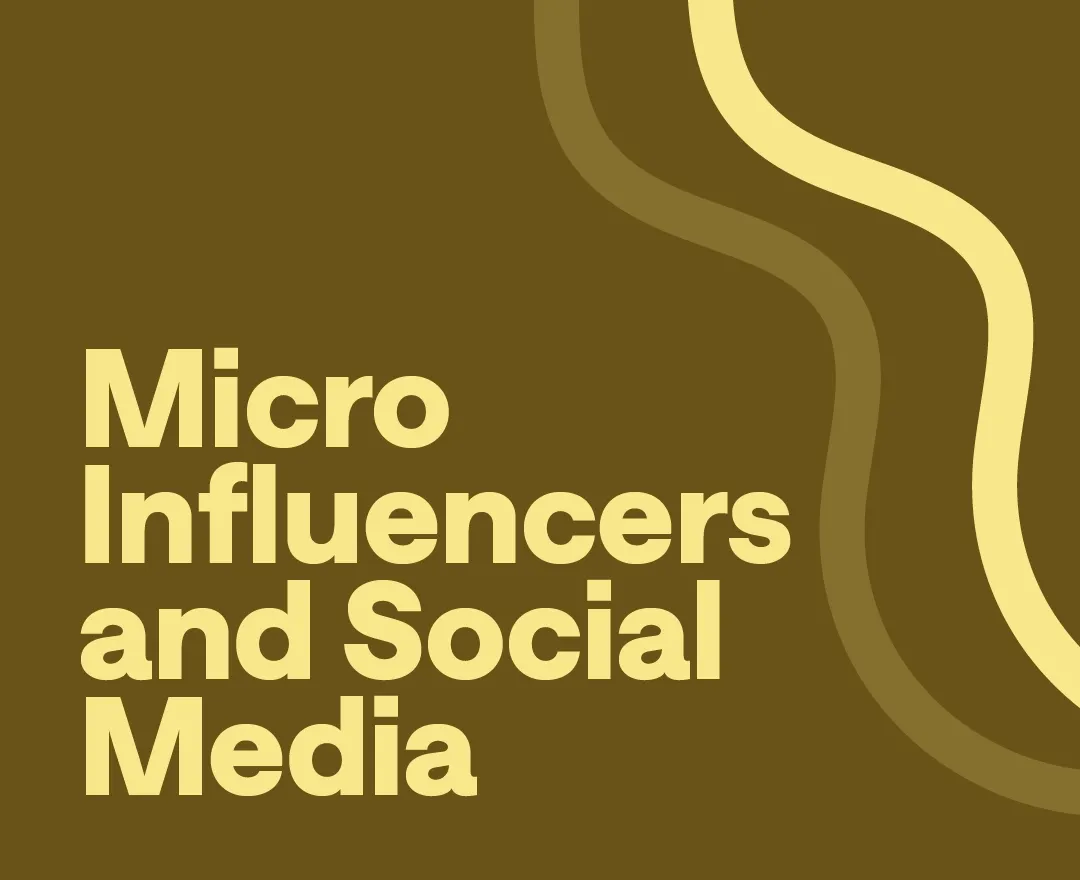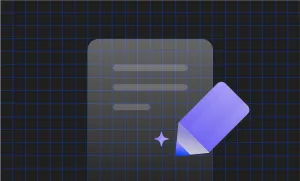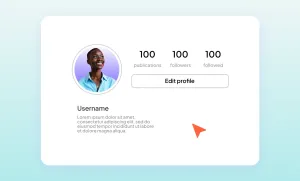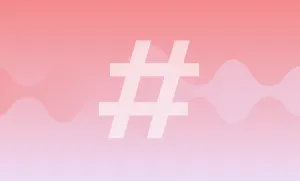Social media is saturated with celebrity endorsements and mega-influencers, and in turn, a curious trend has emerged: the rise of micro-influencers. These everyday content creators, armed with modest yet engaged followings, are reshaping social media and the way brands interact with creators.
But what exactly is driving this shift? Why are brands increasingly turning to these smaller-scale content creators instead of chasing after accounts with millions of followers?
The answer lies in the power of authenticity and targeted reach. Micro-influencers, with their niche audiences and relatable content, are proving that sometimes less really is more when it comes to influence.
If you've ever wondered about the potential of your own social media presence or are curious about the mechanics behind this growing trend, you're in the right place. Let's take a good look at how you can become a micro-influencer, and explore why it's become a game-changer for both brands and content creators alike.
How to become a micro-influencer?
Becoming a micro-influencer might seem like a big task, but with the right approach, anyone can do it. Here are some simple steps to help you get started on your journey to becoming a micro-influencer:
1) Find your niche
The first step to becoming a micro-influencer is digging deep and identifying a specific area within your passion that sets you apart. For example, instead of just focusing on vegan cooking, you could specialize in raw vegan desserts or vegan meal prep for busy professionals. The more specific your niche, the easier it will be to attract a dedicated audience. Research your niche to understand the content landscape and identify gaps you can fill. Use tools like Google Trends, social media hashtags, and competitor analysis to gain insights.
2) Create authentic content
Once you’ve found your niche, focus on creating authentic content. Share your personal experiences, tips, and stories that resonate with your followers. People are drawn to authenticity and relatability. Avoid overly polished and staged posts; instead, show the real you. Whether it's behind-the-scenes glimpses or honest reviews, staying real will help you build trust and loyalty among your followers. Remember, people follow micro-influencers for their genuine voice, not just polished ads. And don’t worry about technical aspects of content creation. A lot of AI tools nowadays help you create content in just a few clicks without needing any audio or video editing experience:
3) Engage with your community
Engagement is crucial for building a loyal following. Respond to comments, ask questions, and create conversations with your audience. Show appreciation for your followers by acknowledging their input and feedback. Hosting live sessions, Q&A segments, or even giveaways can boost engagement. The more you interact with your followers, the stronger your community becomes. Engaging with your audience not only increases your visibility but also helps you understand what they enjoy, making your content more appealing.
4) Start micro-influencer collaborations
Collaborating with other influencers should be a must in your list of micro-influencer marketing strategies. It is a great way to expand your reach and grow your following. Find influencers in your niche with similar or slightly larger followings and propose collaboration ideas. This could be guest posts, joint live sessions, or social media takeovers. Collaborations can introduce your profile to a wider audience and help you build valuable connections within your niche. Plus, it’s a fun way to create new content and share different perspectives with your followers.
5) Leverage multiple platforms
Don’t limit yourself to just one social media platform. While it’s good to focus on your main platform, branching out to others can help you reach a broader audience. For example, if you primarily use Instagram, try sharing content on TikTok, YouTube, or even starting a blog. Different platforms attract different audiences, and diversifying your presence, and repurposing content across socials, can boost your visibility. Plus, it provides more opportunities for brands to discover and collaborate with you.
6) Adapt to changing trends
Finally, regularly analyze your performance and be willing to adapt. Use the analytics tools provided by social media platforms to understand what content works best and what doesn’t. Pay attention to which posts get the most engagement and which ones fall flat. This data will help you refine your content strategy. Don’t be afraid to try new things and change your content if necessary. The digital landscape is always changing, and staying flexible will help you stay relevant and continue growing your influence.
Social media influencers who’ve built their followers from scratch
1) Emma Chamberlain
From baking cupcakes for her birthday to getting invited to the Met Gala: Emma Chamberlain is really living the American dream. She started her career by opening a YouTube channel in 2016 with only 50 subscribers. By the summer of 2017, she began posting her first vlogs, which quickly resonated with audiences thanks to her unique and candid style. Emma's humorous and relatable content, like the "MY BIRTHDAY IS RUINED” video, helped her rapidly grow her following. Today, she has over 12 million subscribers, making her one of the funniest and most popular personalities on YouTube.
2) Liza Koshy
Liza Koshy began her social media journey on Vine, a now no longer existing platform for short-form videos. Her energetic and comedic skits quickly gained her a massive following. When Vine shut down, Liza transitioned to YouTube, where she continued to create hilarious content that connected with a broad audience. Her YouTube channel now boasts over 17 million subscribers, and she has expanded her influence into acting and hosting, demonstrating her versatility and widespread appeal.
3) Zach King
Zach King is known for his "magic vines"—short videos edited to look as though he is performing magic tricks. He started his social media career on Vine and seamlessly transitioned to other platforms, including Instagram and YouTube after Vine shut down. Zach's creative and visually stunning videos have garnered him millions of followers. On YouTube, he has over 15 million subscribers continually amazed by his innovative content and storytelling skills.
4) Huda Kattan
Among one of the best-known Instagram influencers nowadays is Huda Kattan. Huda Kattan began her career as a makeup artist and blogger, sharing beauty tips and tutorials online. She founded her beauty brand, Huda Beauty, in 2013 and used social media to promote it. Her engaging and informative beauty content quickly amassed a large following. Today, Huda has over 50 million followers on Instagram and is one of the most influential figures in the beauty industry. Her success story is a testament to the power of leveraging social media to build a global brand from scratch.
How Podcastle Can Help Aspiring Influencers
Podcastle offers an all-in-one suite of tools designed to simplify content creation for aspiring influencers. Whether you're recording a podcast, editing audio, or producing high-quality content, Podcastle makes the process effortless. With AI-powered tools at your disposal, you can focus on growing your influence and connecting with your audience.
FAQs
What is a micro-influencer?
A micro-influencer is an influencer with a follower count of 10,000 to 100,000. For your reference, Influencers are often grouped by their follower counts, and there are four main categories they fit into: nano-influencers (1K–10K), micro-influencers (10K–100K), macro-influencers (100K–1M), and mega or celebrity influencers (1M+).
Micro-influencers are becoming a go-to choice for brands to work with for several reasons. First, they are more affordable. While hiring a mega-influencer can cost tens of thousands of dollars per post, micro-influencers charge much less. For example, a post from a micro-influencer might cost between $100 to $500 on Instagram, making it easier for brands to manage their budgets and work with multiple influencers.
Another advantage of micro-influencers is their high engagement rates. Their followers often feel a closer connection to them, leading to more likes, comments, and shares. This engagement can be much higher than that of bigger influencers. For instance, micro-influencers on Instagram have an average engagement rate of 6%, compared to just 1.97% for mega-influencers.
How many followers does a micro-influencer have?
Different sources define micro-influencers differently. According to some, any influencer who has more than 1000 followers is a micro-influencer, while nano-influencers are those who have less than 1K followers. But for many brands 1K-100K is a pretty big range, so micro influencer follower count should start at least from 10K and go up to as high as 100K. So, anyone below this range would be considered a nano-influencer.
What is a nano-influencer?
A nano-influencer is an influencer with a smaller following, typically between 1,000 and 10,000 followers. They occupy the tier just below micro-influencers in terms of audience size.
That said, nano-influencers are still able to have highly engaged, niche audiences. Their smaller follower count allows them to maintain closer connections with their audience, resulting in higher engagement rates compared to influencers with larger followings.
While nano-influencers may not offer the same broad reach as micro or macro-influencers, they can be an effective tool for brands looking to build authentic connections with specific audience segments or test influencer marketing strategies on a smaller scale.








